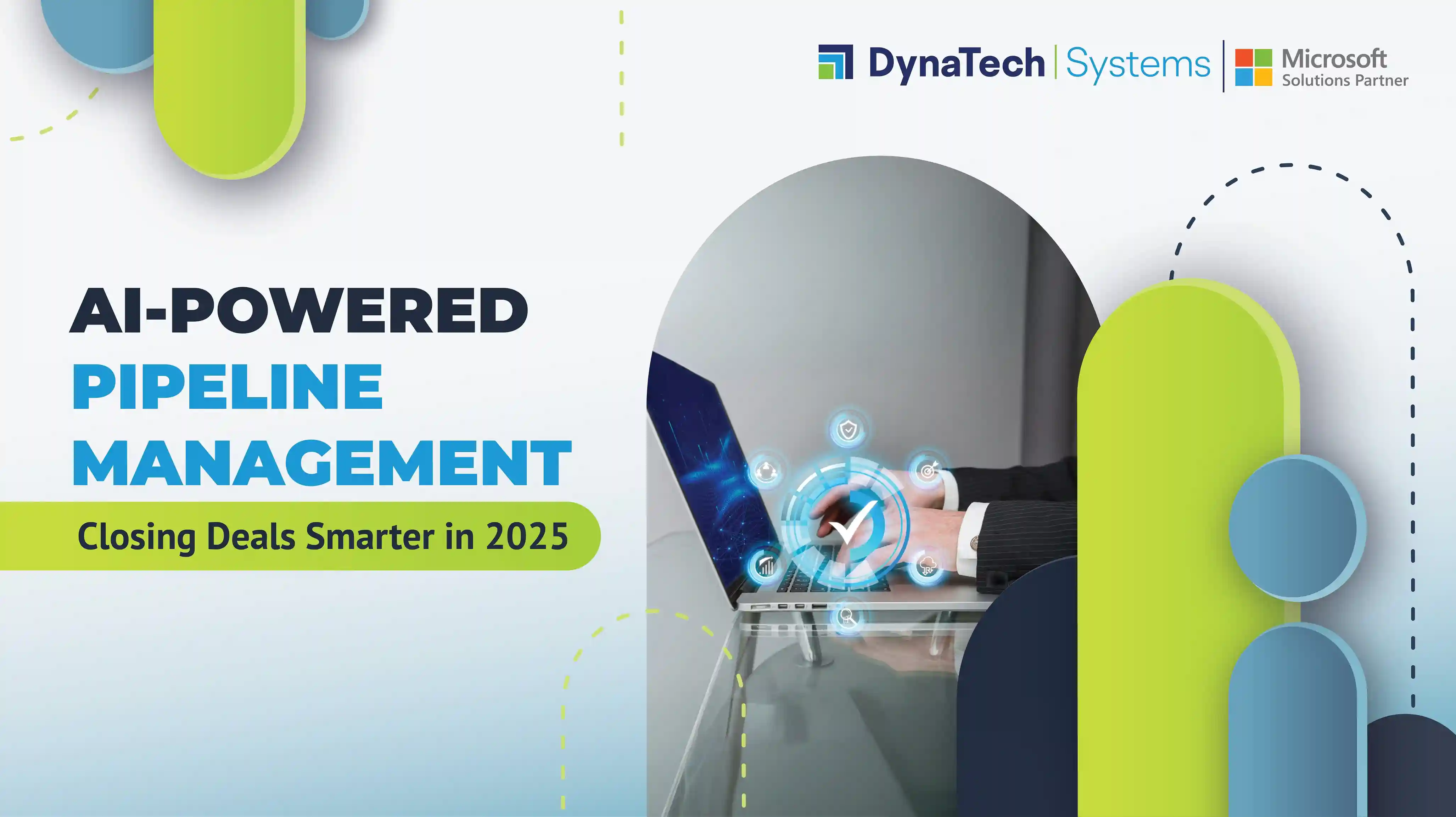Sales success hinges on one critical factor: prioritizing the right opportunities at the right time. Did you know that only 47% of sales reps achieve their quota annually? With growing competition, longer sales cycles, and increasingly complex buyer journeys, pipeline optimization has become a critical component of sales success.
In a landscape where sales reps manage multiple leads simultaneously, the challenge of knowing which deals deserve focus often leads to wasted effort or missed opportunities. But what if there was a way to optimize your sales pipeline and ensure your team always acts on the most promising leads?
In 2025, mastering your pipeline isn’t just about tracking leads—it’s about smart prioritization and leveraging advanced tools to ensure that every opportunity translates into a win. This isn’t just about improving efficiency—it’s about fundamentally changing how deals are identified, prioritized, and closed. Let’s explore how predictive insights, real-time data, and advanced CRM tools are enabling sales teams to thrive in an increasingly competitive market.
The Challenge of Pipeline Prioritization
While data is often hailed as the key to business success, sales teams face the daunting task of sifting through mountains of information. Questions like these remain critical:
- Which leads deserve immediate attention?
- Which deals are truly progressing?
- How can sales teams accurately forecast outcomes?
Without clear, data-backed guidance, many teams resort to intuition or outdated CRM systems. The result? Missed opportunities, inaccurate forecasts, and inefficiencies across the board. For sales reps juggling numerous leads, every decision can impact the likelihood of closing a deal.
Understanding the Modern Sales Pipeline
The sales pipeline isn’t just a funnel anymore—it’s a dynamic ecosystem. To optimize it, you must first understand its components and the challenges unique to 2025:
Key Pipeline Stages:
- Lead Generation
- Lead Qualification
- Proposal & Negotiation
- Closing
Key Challenges in 2025:
- Data Overload: With CRMs capturing massive amounts of data, sales teams struggle to derive actionable insights.
- Lengthened Sales Cycles: 54% of sales representatives say selling has been harder in 2024 as compared to previous year due to the increased sales cycle.
- Buyer Behavior: 76% of the consumers said they would prefer to purchase from a brand that personalizes user experiences.
Takeaway: A static approach won’t work. You need a fluid strategy that adapts to changing buyer preferences.
The Need for Real-Time Predictive Insights
Imagine knowing not only which leads are in your pipeline, but which are most likely to convert. Imagine accurately predicting the trajectory of a deal and receiving real-time recommendations for advancing it. This is no longer a futuristic concept—it’s the reality enabled by AI-powered sales optimization.
According to a recent study, high-performing sales teams are 1.5 times more likely to use AI tools for pipeline management, leading to a 30% increase in deal closures. The ability to harness predictive insights is revolutionizing sales strategies:
- Targeted Prospecting: AI analyzes past behaviors and engagement data to identify high-potential leads.
- Dynamic Forecasting: Unlike static, past-data-dependent methods, AI continuously updates forecasts based on real-time interactions.
- Tailored Responses: Predictive analytics suggest personalized solutions for proposals and pitches, boosting conversion rates.
|
Traditional Pipeline Management |
AI-Powered Pipeline Management |
|
Reactive approach |
Proactive insights |
|
Relies on static, past data |
Uses real-time data |
|
Manual prioritization |
Automated lead scoring |
|
Generalized follow-ups |
Personalized recommendations |
The Key to Closing More Deals
Sales success doesn’t rely on chasing every lead—it’s about focusing on the right ones.
How to Prioritize Effectively
1. Segment Leads Using Scoring Models
Assign scores based on behavior, demographics, and engagement. For example:
|
Behavior |
Score |
|
Visited Pricing Page |
+10 |
|
Ignored Follow Ups |
-5 |
|
Downloaded Resources |
+15 |
2. Leverage AI for Predictive Analytics
Tools like Microsoft Dynamics 365 Sales Insights analyze past deals to predict which leads are most likely to convert.
3. Focus on Deal Value vs. Deal Effort
Use a Value vs. Effort Matrix to prioritize high-value, low-effort deals.
|
Value |
Effort |
Priority |
|
High |
Low |
Top |
|
Low |
High |
Avoid |
Pro Tip: Regularly revisit and update your prioritization criteria to reflect evolving trends.
Shifting from Reactive to Proactive Sales Management
The transition to proactive sales management hinges on predictive insights that go beyond surface-level data. With AI tools, sales teams can identify patterns and behaviors indicative of success, helping them focus on deals that matter most.
Key Scenarios of Predictive Sales Management:
- Facilitating Targeted Prospecting: AI tools pinpoint leads with the highest likelihood of conversion.
- Responding to RFPs: Predictive analytics craft tailored solutions based on past successes, streamlining the proposal process.
- Improving Forecast Accuracy: Real-time updates to forecasts allow teams to adjust strategies dynamically.
Accelerating Deal Closures: Practical Strategies for 2025
i. Personalize Every Interaction
- 9 out of 10 marketers have witnessed increased ROI by implementing personalization strategies.
- Use tools like Dynamics 365 Customer Insights to gain a 360° view of your customers.
ii. Automate Follow-Ups and Tasks
- Sales reps spend 21% of their time on admin tasks. Automating reminders, email follow-ups, and reporting saves hours.
- Use Power Automate to schedule follow-ups for dormant deals automatically.
iii. Streamline Proposal Processes
- Incorporate CPQ (Configure, Price, Quote) tools to create quick, accurate quotes.
- Example: DynaTech’s CPQ for Dynamics 365 CRM helps reps customize proposals within minutes.
iv. Overcome Objections Early
- 57% of buyers disengage when objections aren’t addressed proactively.
- Train your sales reps to address common objections (e.g., pricing, timelines) with tailored responses.
v. Use Data to Identify Deal Stalling Points
- Regularly analyze pipeline data to identify where deals slow down.
- For instance: 45% of deals stall at the negotiation stage due to unclear terms.
Solution: Standardize contracts using tools like Contract 360
Learn More: DynaTech Systems x Contracts 365: Elevating CRM and Contract Management
Microsoft Dynamics 365 Sales: A Game-Changer
Many organizations struggle to make sense of their vast amounts of sales data. Microsoft Dynamics 365 Sales and Copilot address this challenge by offering actionable insights that optimize pipeline management. These tools empower sales teams to prioritize leads, refine forecasts, and close deals efficiently.
Features of Microsoft Dynamics 365 Sales:
Sales Qualification Agent:
- Researches leads using internal and external data.
- Delivers prioritized lead lists with recommended next steps.
- Drafts personalized customer emails, saving valuable time.
Predictive Revenue Forecasting:
- Provides continuously updated insights.
- Allows for dynamic strategy adjustments based on customer interactions.
Automated Pipeline Management:
- Eliminates manual tasks like lead follow-ups.
- Frees up time for relationship-building and deal-closing efforts.
Leveraging More Technologies for Pipeline Optimization
i. CRM as Your Central Hub
- A robust CRM, like Dynamics 365, provides real-time visibility into pipeline stages, bottlenecks, and forecasts.
ii. AI-Powered Recommendations
- Dynamics 365 Copilot offers AI-generated suggestions, such as:
- Optimal times to reach out.
- Predicted lead conversion probability.
iii. Integration with Third-Party Tools
- Ensure your CRM integrates seamlessly with eCommerce platforms, payment gateways, and shipping tools for holistic sales operations.
Looking for the best Payment Gateway Integrator? Don’t Forget to explore this on our website.
iv. Real-Time Collaboration with Teams
- Sales reps can collaborate directly in Microsoft Teams, ensuring quick approvals and deal progress.
Metrics That Matter: How to Track Pipeline Success
Critical Metrics
Lead-to-Customer Conversion Rate:
- Formula: (Customers ÷ Leads) × 100
- Benchmark: Aim for 10%-15%.
Average Sales Cycle Length:
- Formula: Total days to close ÷ Number of deals closed.
- Benchmark: 80 days or less for B2B sales.
Deal Win Rate:
- Formula: (Deals Won ÷ Total Deals) × 100
- Benchmark: 25%-30%.
Using Dashboards to Visualize Data
- Example: Use Power BI to create interactive dashboards highlighting performance by region, product, or team.
|
Metric |
Team A |
Team B |
|
Win Rate |
28% |
22% |
|
Sales Cycle (Days) |
75 |
90 |
Closing Deals Smarter in 2025
As the pace of business accelerates, sales success depends on agility and precision. Real-time insights and predictive analytics have become essential for modern sales teams. With tools like Microsoft Dynamics 365 Sales and Copilot, organizations can:
- Transform raw data into actionable insights.
- Accurately forecast revenue and deal trajectories.
- Streamline workflows and maximize efficiency.
Take the Next Steps:
Are you ready to revolutionize your sales process? Discover how Microsoft Dynamics 365 Sales can help you prioritize your pipeline and close more deals in 2025. Learn more about Dynamics 365 Sales or contact DynaTech today to get started.




























